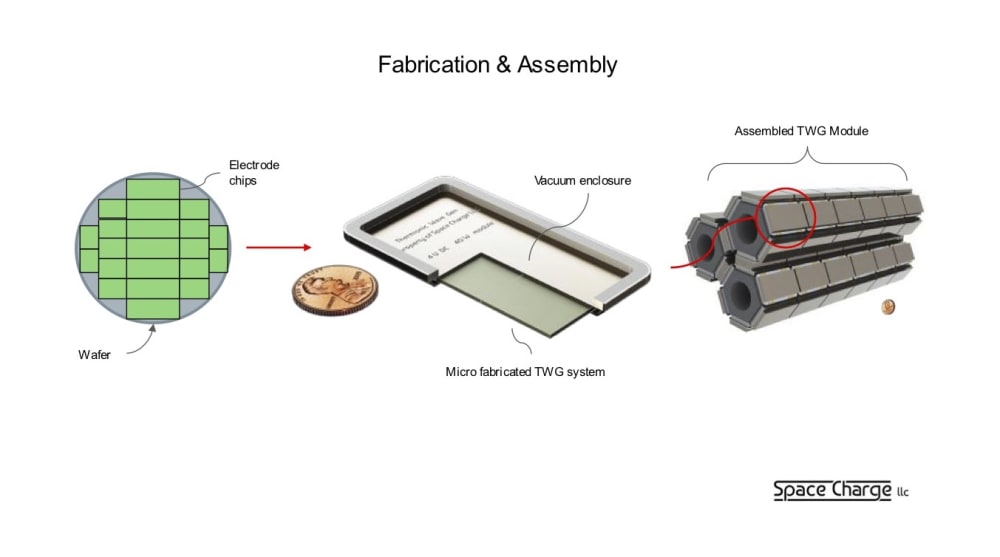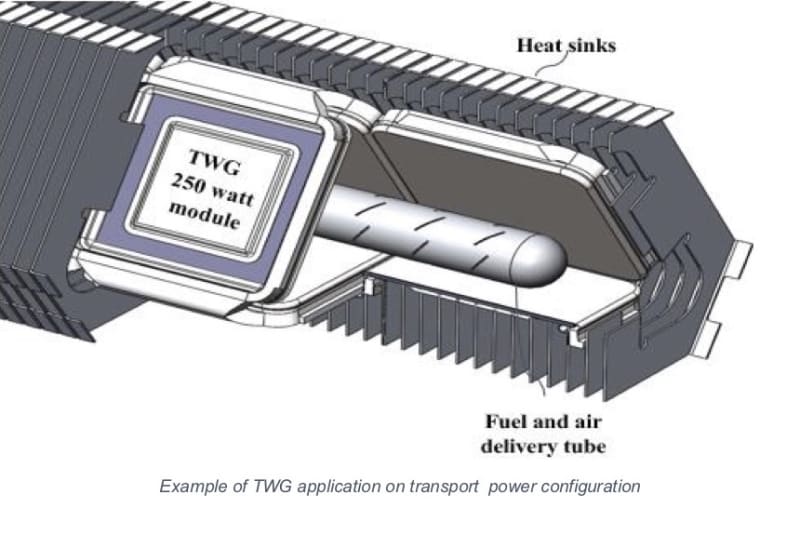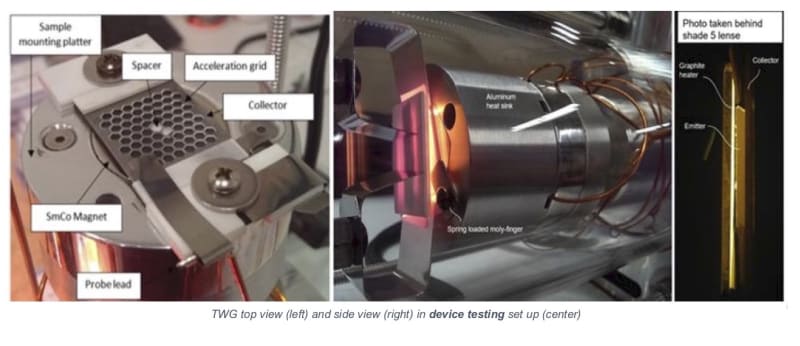

DIRECT ENERGY CONVERTOR — THERMIONIC TRANSISTOR
Direct conversion of thermal energy to electric energy remains one of the most promising, yet challenging, methods of power production.
Direct thermal to electric energy conversion has potential to replace internal combustion engines and turbines in nearly all electrical applications, thanks to extremely low cost, lightweight, scalability, and little-to-no maintenance. Direct convertors can use a wide variety of thermal sources, ranging from fuel combustion, including green fuel such as H2, concentrated solar energy, geothermal, and waste heat, etc.
In principle, a thermal source energy heats an electrode, excited electrons escape the surface (Edison Effect) across a potential energy barrier to a differently charged electrode, producing electric power output, returning lower energy electrons through a work circuit.
Prior art employed “heat engine” models, for design, and failed to produce commercial devices. Major and multiple challenges include electrostatic choking effects (so-called space charge build up), work function characteristics of materials, and fabrication difficulties.
This novel thermionic transistor (TT), focuses primarily on electromagnetic force (EMF), since the property of charge comprises the primary dynamic. We build a transistorized linear amplifier.
As a transistor, we utilize solid-state, wafer fabrication to build devices with tolerances in the low microns and nanometers. This bandgap scale permits compact, lightweight form factors that can produce AC or DC as desired. TT can produce pure sine waves at any frequency, and can switch frequencies instantaneously.
This thermionic transistor, a form of the Space Charge LLC (US 10,388,496 B2, Thermionic Wave Generator [TWG]) results in electrodynamic devices that can take almost any form factor, in nearly any environment. Fabrication at wafer-scale, employing advanced microfabrication techniques and using lightweight materials, decreases both weight and cost of manufacture by ~1000x that of mechanical power generation technologies, like internal combustion engines and power turbines. Modular design and potential for conversion efficiencies exceeding 50%, enable TT to scale from W to MW, with featherweight, silent, high power densities. They have low to no maintenance, and high reliability.
Two initial markets with large potential include: 1) “distributed generation” of energy for industrial, residential, and business, including behind-the-meter, and 2) the entire transportation sector including aircraft and aerospace due to extreme light weight and low cost. Beside replacement, TTs have potential to create new applications, such as untethered exoskeletons.
Current stage of development and scope: Space Charge LLC has partnered with Argonne National Laboratory to finalize the core materials, as well as the design of TT by i) characterizing and rendering low work function materials as scalable thin and thick films on dies, and, ii) designing and textured nanostructures to enhance bulk material properties.
Societal Need
TT fills long-standing needs for clean, universal, lightweight, low-maintenance electricity. TT provides a base for effective global climate strategy, cutting carbon emission from all energy-intensive sectors. TT has potential to produce primary clean energy, globally, harvesting concentrated solar power, combusting hydrogen, as well as using low carbon footprint alternative fuels. Optimized, it can rapidly command market.
-
Awards
-
 2021 Sustainable Technologies/Future Energy Honorable Mention
2021 Sustainable Technologies/Future Energy Honorable Mention -
 2021 Top 100 Entries
2021 Top 100 Entries
Like this entry?
-
About the Entrant
- Name:John Read
- Type of entry:teamTeam members:John Read, Daniel Sweeney
- Software used for this entry:COMSOL, Solidworks
- Patent status:patented








